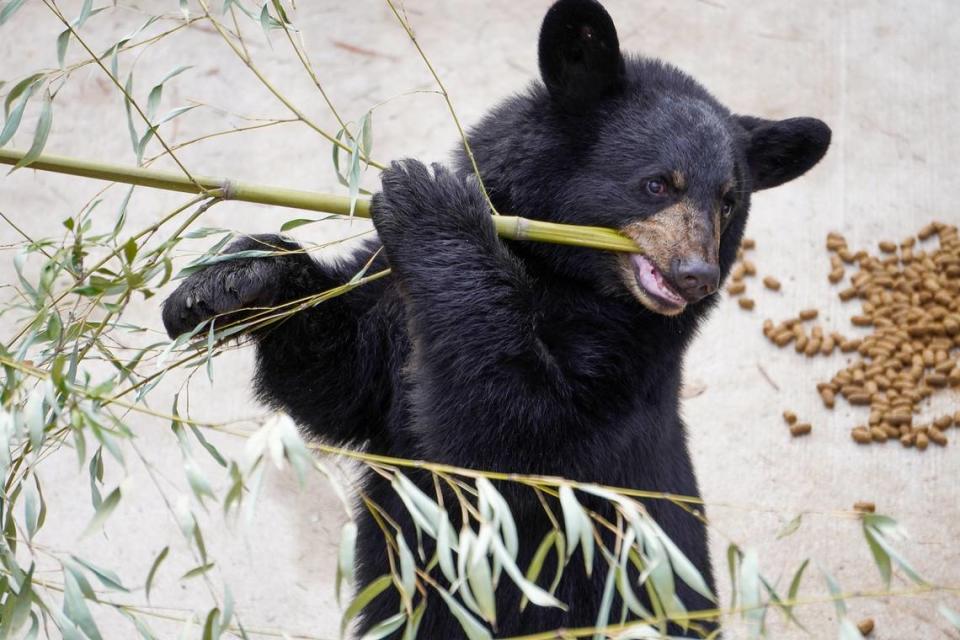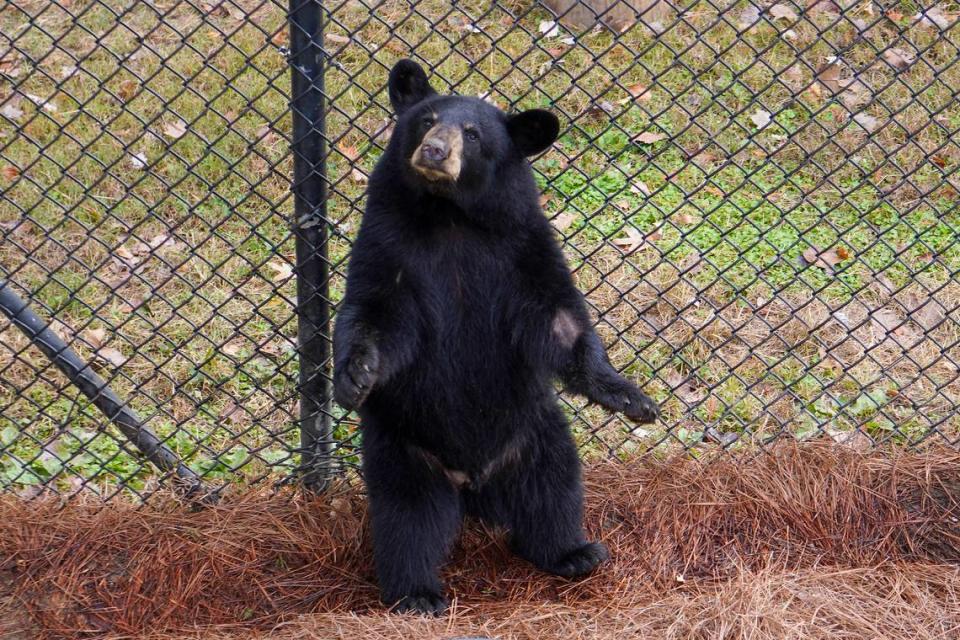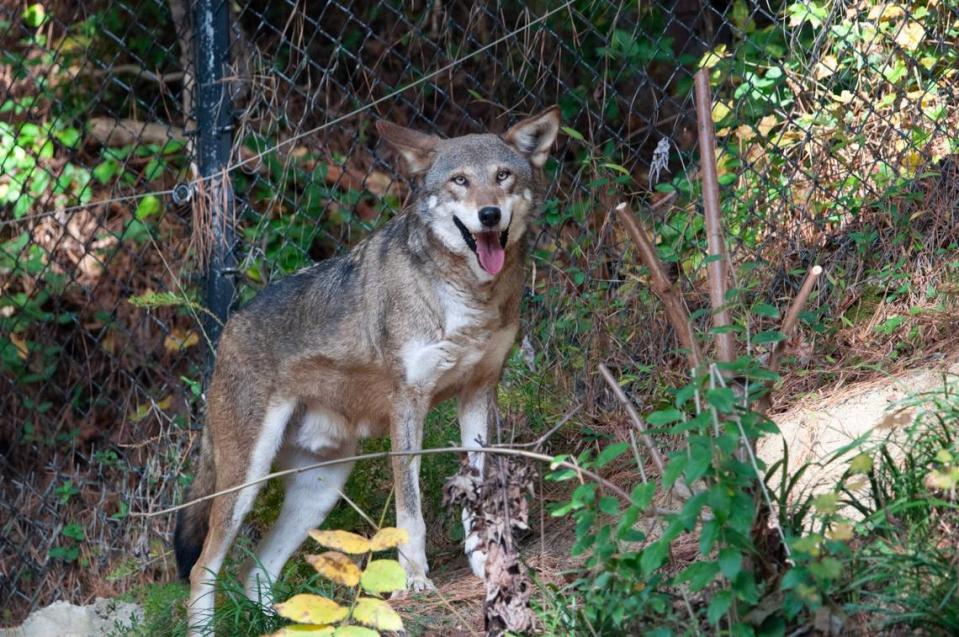Black bear cub, all alone in the wild, finds home in Durham. Now help name him.
There’s a new bear in the Bull City.
The Museum of Life and Science announced Tuesday it now has a 9-month-old American black bear cub found abandoned in the wild last spring.
The 88-pound male cub joins the Durham museum’s three adult black bears, Mimi (19), Gus (17) and Little Bear (2).
The cub was just 4 pounds when he was found in western North Carolina in April, Sherry Samuels, the museum’s senior director of animal care, said in an interview Tuesday.

His mother was nowhere to be found.
The cub was placed in a rehabilitation setting with other cubs before being reintroduced to the wild in September.
When young bears are released, wildlife officials hope to never see them again. But a week later, people were already interacting with him on a trail, and officials decided it would not be safe for him to remain in the wild.
“Any interaction with a bear is dangerous,” Samuels explained. “All of that really is a death sentence for a wild animal because then it gets used to people. We need to let wildlife be.”
There are an estimated 15,000 black bears in North Carolina, and their numbers are growing as the animals spread from the coast and mountains inward, according to the UNC Charlotte Urban Institute. Females can grow up to 300 pounds and males up to 500 pounds.

Wildlife officials brought the cub to the museum where he underwent a week of quarantine, with the other bears allowed to see and smell him without physical contact. Then came a week of introductions, with the cub gradually getting more time with the adults. Hoses and a fire extinguisher at the ready in case of a confrontation never had to be used, Samuels said.
The cub got to venture outside the bear house for the first time this week, looking up at the human visitors from the bears’ acre enclosure.
Eventually, Samuels said, she’d like the young bear to ignore the visitors.
“I would like that bear to not really think people are that interesting,” she said. “And he’ll get there. It’s Day One.”
The museum will launch a naming contest for the cub on its social media in the next few weeks.
“We want the community to be part of this exciting moment,” Ro Rode, marketing and communications director, said in a news release “Naming the bear cub is a special way for our visitors to connect with the museum’s wildlife conservation efforts and engage in the ongoing story of our bear group.”

Red wolf breeding program
The Museum of Life and Science is accredited by the Association of Zoos and Aquariums and houses more than 60 species of live animals including rescued black bears, lemurs and endangered red wolves.
Just last month it welcomed Adeyha, a male red wolf from the Niabi Zoo in Coal Valley, Illinois, in a swap for a male red wolf named Niko.
Niko had not successfully bred with a female red wolf at the museum named Oak for two years. The hope is that the wolves will be more amorous with new partners.
The black bear exhibit is open during the museum’s regular hours, from 10 a.m. to 5 p.m. Tuesday through Sunday. The museum is located at 433 W. Murray Ave.

